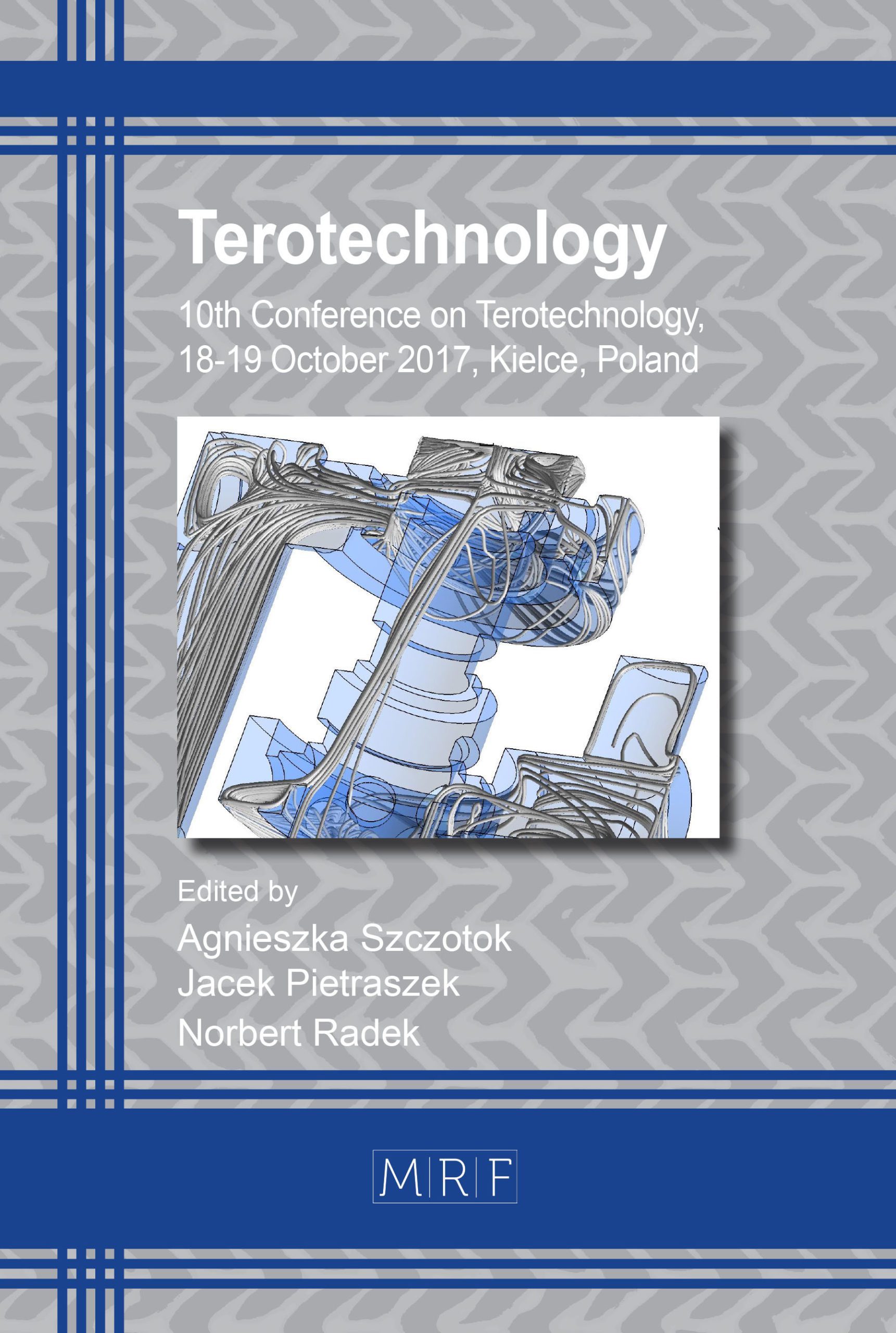Analysis of Possibilities of Using Polymeric Materials for Testing Prototypes of Harmonic Drive
PACANA Jacek, PACANA Andrzej
download PDFAbstract. The main objective of the analysis was to assess the suitability of rapid prototyping methods to perform functional prototypes of a harmonic drive. Physical models of a gear wheel for the harmonic drive were made and geometric accuracy control was carried out therefor. Precise measurements of tooth profiles showed differences between models made with the use of 3D printing and corresponding theoretical outlines. The discrepancies were not decisive for the correctness of the work of the analyzed harmonic drive, since the key parameter affecting its kinematic accuracy is the scale’s constancy.
Keywords
Harmonic Drive, Flexspline, Polymeric Materials, 3D Printing, FDM, MEM, Coordinate Measurements
Published online 7/16/2018, 6 pages
Copyright © 2018 by the author(s)
Published under license by Materials Research Forum LLC., Millersville PA, USA
Citation: PACANA Jacek, PACANA Andrzej, ‘Analysis of Possibilities of Using Polymeric Materials for Testing Prototypes of Harmonic Drive’, Materials Research Proceedings, Vol. 5, pp 61-66, 2018
DOI: http://dx.doi.org/10.21741/9781945291814-11
The article was published as article 11 of the book Terotechnology
![]() Content from this work may be used under the terms of the Creative Commons Attribution 3.0 licence. Any further distribution of this work must maintain attribution to the author(s) and the title of the work, journal citation and DOI.
Content from this work may be used under the terms of the Creative Commons Attribution 3.0 licence. Any further distribution of this work must maintain attribution to the author(s) and the title of the work, journal citation and DOI.
References
[1] X. Chen, Y. Liu, J. Xing, S. Lin, W. Xu., The parametric design of double-circular-arc tooth profile and its influence on the functional backlash of harmonic driver, Mechanism and Machine Theory, no. 73 (2014) 1-24.
[2] O. Kayabaşi, F. Erzincanli, Shape optimization of tooth profile of a flexspline for a harmonic drive by finite element modeling, Materials and Design, no. 28 (2007) 441-447. https://doi.org/10.1016/j.matdes.2005.09.009
[3] Z. Xinjie, Y. Changxiang: Application of precision harmonic gear drive in focusing mechanism of space camera, Proceedings of the SPIE, vol. 10 (2010).
[4] H. S. Jeon, S. H. Oh, A study on stress and vibration analysis of a steel and hybrid flexspline for harmonic drive, Composite Structures, no. 47 (1999).
[5] J. Pacana, W. Witkowski, J. Mucha, FEM analysis of stress distribution in the hermetic harmonic drive flexspline, Strength of Materials, vol. 49, no. 3 (2017) 388-398. https://doi.org/10.1007/s11223-017-9879-z
[6] Z. Ren, J. Flasker, Numerical stress analysis of harmonic gear drive flexspline, Special Gears – modeling, product development and prospect of application. Warszawa (1996) 133-146.
[7] P. Dudek, FDM 3D printing technology in manufacturing composite elements, Archives of Metallurgy and Materials, vol. 58, issue 4 (2013) 1415-1418. https://doi.org/10.2478/amm-2013-0186
[8] G. Budzik, Possibilities of utilizing 3DP technology for foundry mould making, Archives of Foundry Engineering, Vol. 7, Issue 2 (2007) 65-68.
[9] R. Ulewicz, Practical aplication of Quality tools in the cast iron foundry, Manufacturing Technology, vol. 14, Issue 1 (2014) 104-111.
[10] L. Parv, Cost of product functions using analysis of value, Production engineering Archives, 12/3 (2016) 14-18.
[11] A. Gadek-Moszczak, N. Radek, S. Wronsk, J. Tarasiuk, Application the 3D Image Analysis Techniques for Assessment the Quality of Material Surface Layer Before and After Laser Treatment, TEROTECHNOLOGY, Advanced Materials Research, 874 (2014) 133-138.
[12] A. Pacana, L. Bednárová, J. Pacana, I. Liberko, A. Woźny, D. Malindžak, Effect of selected factors of the production proces of stretch film for its resistance to puncture. Przemysł Chemiczny. 12 (2014) 2263- 2265.
[13] T. Dziubek, M. Oleksy, Zastosowanie systemu optycznego ATOS II w technikach szybkiego prototypowania modeli kół zębatych otrzymywanych na bazie żywicy epoksydowej, Polimery nr 1 (2017) 44-51. https://doi.org/10.14314/polimery.2017.044
[14] M. Cader, R. Oliwa, O. Markowska, G. Budzik, Otrzymywanie prototypów części chwytaka robota mobilnego z materiałów polimerowych z wykorzystaniem technologii wytwarzania przyrostowego. Cz. I. Właściwości mechaniczne i stałe materiałowe próbek z kopolimeru akrylonitryl-butadien-styren, Polimery, T. 62, nr 1 (2017) 27-35.































